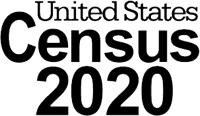Mobilizing Data-Driven Local Outreach for the 2020 Census
Funder:
Annie E. Casey Foundation
Contact:
Kathryn Pettit [email protected]
Date:
January 2018 - May 2020

NNIP's new project promotes data-driven planning for 2020 Census local outreach to ensure a complete count of young children and people of color, starting with a resource list for communities and pilots in with the Baltimore Neighborhood Indicators Alliance and Community Information Now (San Antonio). Our brief outlines the ways that local data and tech organizations can contribute to strategic planning and mobilization for outreach.
We are pursuing two strategies:
- Encouraging local organizations with data, analytic, and technology skills to provide analytic and convening support to local coalitions, and
- Educating communities across the country on how to leverage local and national data to effectively activate community stakeholders for a Complete Count.
KEY RESOURCES
Local Outreach
- US Census Bureau Partnership site: Learn how you can be a Census Partner organization! The website includes Census 101, a community outreach toolkit, mapping tools, and a description of ideation workshops that communities can host locally. Join the list to get updates.
- Complete Count Committees Map: This is a map of the 2020 Census Complete Count Committees from the US Census Bureau, including participating organizations and contact information.
- Census Counts 2020: This is a website from a coalition of eight national organizations serving as hubs for Census 2020 mobilization. Their toolkit contains materials from Get Out the Count Outreach and CyberSecurity Best Practices. The website includes materials on the citizenship question, different groups in the hard-to-count population, the undercount of young children, and other analytic reports.
- Preparing for the Digital Decennial Census: Building Consent, Equity, and Safety into Digital Transition: This guide from the New School Digital Equity Lab provides digital tactics and techniques to help prevent possible harms, and enable communities and agencies to better prepare for a digital census, including guidance for setting up access points through public wi-fi or public libraries and about digital safety for individuals. They will be producing a series of toolkits, so we encourage you to sign up for their updates.
- Census 2020 employment opportunities: The Census Bureau is already recruiting for many field positions. Starting in Spring 2019, they will be hiring 76,000 people for address canvassing and in Fall 2019, they will begin recruiting for 450,000 field staff to support 2020 operations. Current field jobs are listed on the Census Bureau website and you can also sign up for email updates on recruitment efforts.
Data and Research
- Mapping Hard to Count Communities: This interactive map from CUNY Center for Urban Research has tract-level data showing the share of "hard-to-count" tracts (where the self-response rate in the 2010 census was 73% or less) and other indicators helpful for targeting outreach.
- Response Outreach Area Mapper: This interactive map published by the Census Bureau shows the tract-level Low Response Rate (LRS) - the share of households predicted to NOT self-respond to the Decennial Census. The data are from the 2019 Census Planning Database.
- Home Internet Maps: The National Digital Inclusion Alliance has published an interactive map showcasing the brand-new tract-level data from the American Community Survey on access to internet and computers.
- Counting for Dollars 2020: The Role of the Decennial Census in the Geographic Distribution of Federal Funds: The March 2018 analysis by Andrew Reamer identifies the federal programs that geographically distributes financial assistance based, in whole or part, on data derived from the Decennial Census; and establish the connection between Decennial Census accuracy and the equitable distribution of funds to states. A 2019 analysis analyzes the dollars allocated to counties for five of the key federal programs.
- Differential Privacy: The Census Bureau is planning on implementing a new approach - differential privacy - to avoid the disclosure of individual's data when publishing data products. For a discussion on the implications for data users, see the fact sheet on Differential Privacy in the 2020 Census (Georgetown Center on Poverty and Inequality). IPUMS also has a set of resources on this topic aimed at researchers.
Funder and City Resources
- Funders Census Initiative: FCI 2020, a working group of the Funders Committee for Civic Participation,supports grantmakers by providing forums for funders to learn and strategize together; developing resources, such as a funders' toolkit. updates, fact sheets, analyses; and monitoring Census Bureau progress and tracking legislative issues.
- National League of Cities Municipal Action Guide: This guide suggests ways that cities can support a successful count through collaborating with the Census Bureau, integrating city and municipal departments into the effort, and involving the community through Complete Count Committees.
National Advocacy
- The Census Project: The Census Project is a broad-based network of national, state, and local organizations that supports a fair and accurate 2020 Census and comprehensive American Community Survey. They monitor legislation relating to the ACS and Census and advocate to legislators for full funding and successful implementation. Sign up for their notices for news, resources, and advocacy opportunities.
- Citizenship question: In the Fact sheet: Adding A New Citizenship Question to the 2020 Census, the Leadership Conference describes the history of asking about citizenship (updated March 27, 2018). For updates on the court cases, see the Brennan Center's Census 2020 landing page.
See all NNIP items related to the issues:
2020 Census Mobilization
2020 Census Mobilization
Participating Partners:
Urban Institute
Baltimore Neighborhood Indicators Alliance
Community Information Now (CINow)
